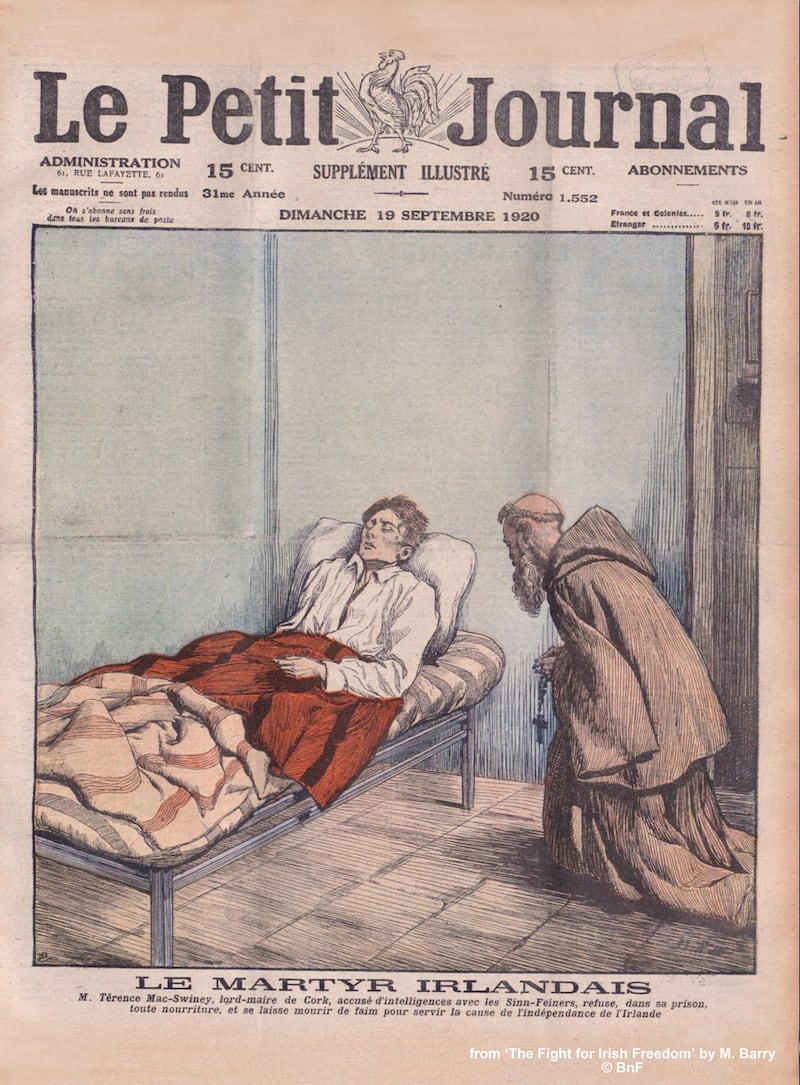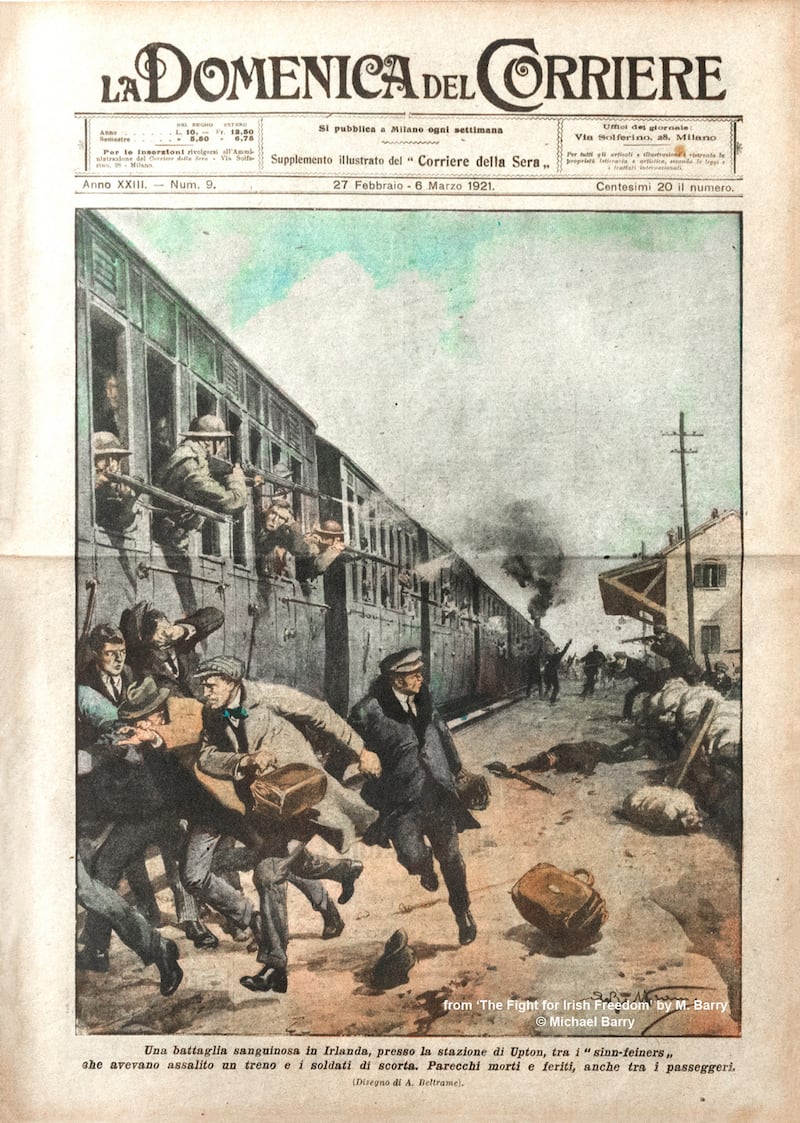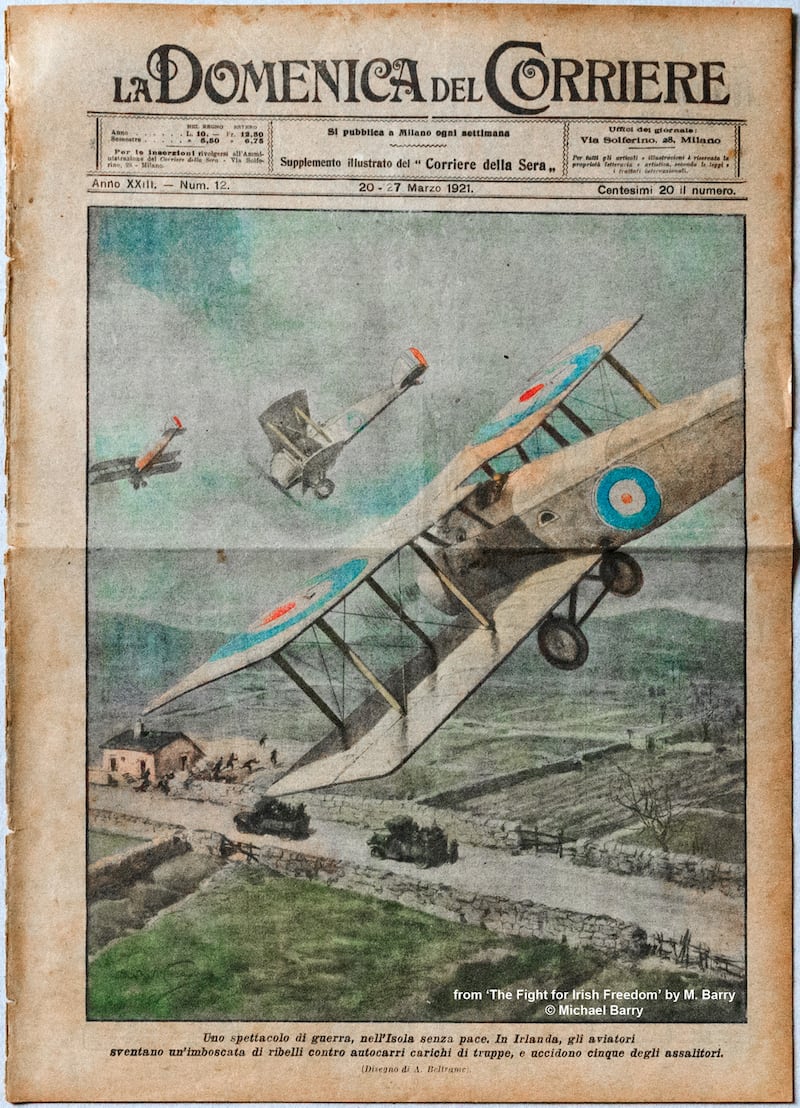As the first World War ended, the victorious nations assembled in Paris in January 1919 to rearrange the world in the interests of “peace”, in reality to expand and enhance their domains.
There were many opportunities, such as the carve-up of the remains of the Ottoman Empire. However, in the home territory of one of the most important victors, discontent was rumbling. This was in Ireland, where on January 21st the recently elected Sinn Féin MPs met to form their own parliament and affirm the declaration of an independent Irish Republic that had been proclaimed in Easter 1916. (It also sent a delegation, which was roundly ignored, to the Peace Conference).
Coincidentally, on the same day, Volunteers attacked and shot dead two RIC constables at Solheadbeg. This marked the start of a ruthless guerrilla war that, every month, gained in intensity. By mid-1921, British casualties were at such a level (and smarting from the international opprobrium garnered due to reprisals and atrocities) that the British negotiated and signed a Truce on July 11th, 1921.
The periodicals were not necessarily accurate, as they mostly accepted the British press agencies' narrative of events
The British press duly reported the events in Ireland over 1919-1921, a period we now call the War of Independence. The Dublin Castle press office, directed by proactive army captains, produced news, laced with a fair amount of black propaganda, usually on the theme that “we have the murder-machine by the throat” and that the British were on the “verge of winning”.
The Dáil Propaganda Department valiantly produced the Irish Bulletin, a basic news sheet printed several times a week. It garnered a reputation for accuracy, when compared to the official "Weekly Summary" issued by Dublin Castle, full of crude falsehoods. The press in Britain, more or less, reported the official line, with little interpretation, that it was a police war against the criminal conspiracy of the "Sinn Féin murder gang". It should be noted that the Irish Times of the day also faithfully reported the official line.
Supplements
As the excitement of the first World War died away, the newspapers on the European continent were able to focus more on this new conflict that was emerging within the “United Kingdom”. A particular feature of the press in France and Italy was the profusion of weekly issues or supplements, where important and dramatic incidents were portrayed in an illustrated form, printed in full colour.
As well as the technology to print in colour, these periodicals employed a number of skilled artists, who, aided by an ample imagination, could produce a dramatic depiction of the event, in a kind of heightened “Boys Own” manner. They naturally focused on happenings within their own country, but frequently depicted dramatic scenes in Europe and further afield.
And so, over the course of 1919-1921, these periodicals began to depict, in dramatic form, some of the key incidents during the Irish War of Independence. These were not necessarily accurate, as they mostly accepted the British press agencies’ narrative of events (which in turn relayed the Dublin Castle viewpoint).
French newspapers
In France, the principal periodical which printed coloured news illustrations was Le Petit Journal, based in Paris. This daily newspaper had been founded in 1863, and with a cheap cover price had soon won a large circulation and became one of France's leading newspapers.
The management was innovative, installing rotary presses in 1872. By 1889 it had a colour rotary press and in 1895 it sold one million copies of the illustrated Sunday supplement (Supplément Illustré), with coloured drawings. However, by 1919, the print run had halved, in comparison to war-time circulation.
The Journal depicted the happenings in Ireland in a reasonably even-handed way. On September 19th, 1920, it showed Terence MacSwiney, Lord Mayor of Cork, during his hunger-strike, with a Capuchin priest ministering to him. This highly dramatic illustration is sympathetic and tells the reader that Mac Swiney, depicted in an almost Christ-like repose, is doing this to serve the cause of Irish independence.

The December 5th, 1920, issue shows the RIC and British troops attacking a small cottage “occupied by the Sinn Féiners”. This may have been a generic scene, as there were many roundups at farms. However, it eerily presages the attack by Crown forces on an IRA unit billeted in a small farmhouse at Clonmult, Co Cork, on February 20th, 1921.
As the crown forces surrounded the cottage, the Volunteers were trapped within. The Auxiliaries set the roof on fire, and the IRA were forced to surrender and emerge. At the end of the engagement, 12 Volunteers lay dead. It has been known as “Kilmichael in reverse” as the British claimed there was a false surrender and they killed all then.
Le Pelerin, or "the Pilgrim", is a French Catholic weekly, still in circulation. In the period after the first World War it included colour illustrations. Its depiction of the burning of the Custom House (May 25th, 1921) was pretty imaginative. In a somewhat "Alamo"-style, it depicted the Volunteers inside, firing at the surrounding British forces – which was indeed accurate, if only momentarily. However, it showed the women civil servants trapped within, one signalling from the window for help, and another, with her dress on fire, which was madly inaccurate.
Italian newspapers
We turn to Italy, to encounter a fairly consistent rendition of British spin. La Tribuna Illustrata was a weekly published in Rome. The supplement to the newspaper had coloured front and back pages. One can see in the illustrations of the Irish occurrences, a more intensified Italian dramatisation, than that of their French counterparts. The illustration depicting a scene from the burning of Cork on November 11th and 12th, 1920, is superbly melodramatic. A looter in plain clothes, standing on a mound of rubble, is dispatched by brave British troops. The caption tells how troops had to "disperse numerous bands of looters that plundered the corpses . . . between the ruins and flames." In reality, the centre of the city had been set alight by the Auxiliary Division of the RIC, who then proceeded to loot.

La Domenica del Corriere was a Sunday supplement to the Corriere della Sera newspaper, published in Milan. One of its illustrators was Achille Beltrame (1871-1945), who was an accomplished painter, and who participated in many prestigious exhibitions.
Beltrame had produced illustrations for La Domenica del Corriere since its inception in 1899. He produced some artistically fine illustrations covering the Irish War of Independence and the subsequent Civil War. In the issue of March 7th, 1921, he shows a well-composed and vivid portrayal of RAF Bristol fighters swooping over trucks. The caption runs: "the airmen foil an ambush by rebels on trucks loaded with troops, killing five of the assailants".

This was the ultimate in “fake news”. The RAF had an undistinguished record during the Irish War – they mainly transported military mail and dropped propaganda leaflets. The RAF had only received permission to attack from the air on March 24th, 1921, and subsequently never managed to inflict any casualties on the IRA.

Ambush
The train ambush that occurred on February 15th, 1921, at Upton, Co Cork, was a disaster for the IRA. The IRA had opened fire on a train, focusing on a central carriage where they thought British troops were located. Unbeknownst to them, the British had deployed along the length of the train. The death toll was eight civilians and three IRA. In the La Domenica del Corriere of March 6th, 1921, Beltrame is able to illustrate the action in a gripping way (although the uniform of the fleeing train official seems to be more Ferrovie dello Stato than Great Southern and Western Railways!)
Most of these illustrated continental weekly supplements are now collectors' items. The coloured drawings of the Irish War of Independence bring to life the events against the background of the almost universal black and white photographs and the few illustrations (usually in the Illustrated London News and Graphic periodicals) that cover that period. These continental journals sometimes provide inaccurate accounts, but they form a valuable part of the narrative of that important time in our history.
Michael B Barry has written The Green Divide (on the Civil War) and Courage Boys, We are Winning (on the 1916 Rising). His The Fight for Irish Freedom, An Illustrated History of the War of Independence, just published, completes his trilogy on the Irish Revolution 1916-1923




















